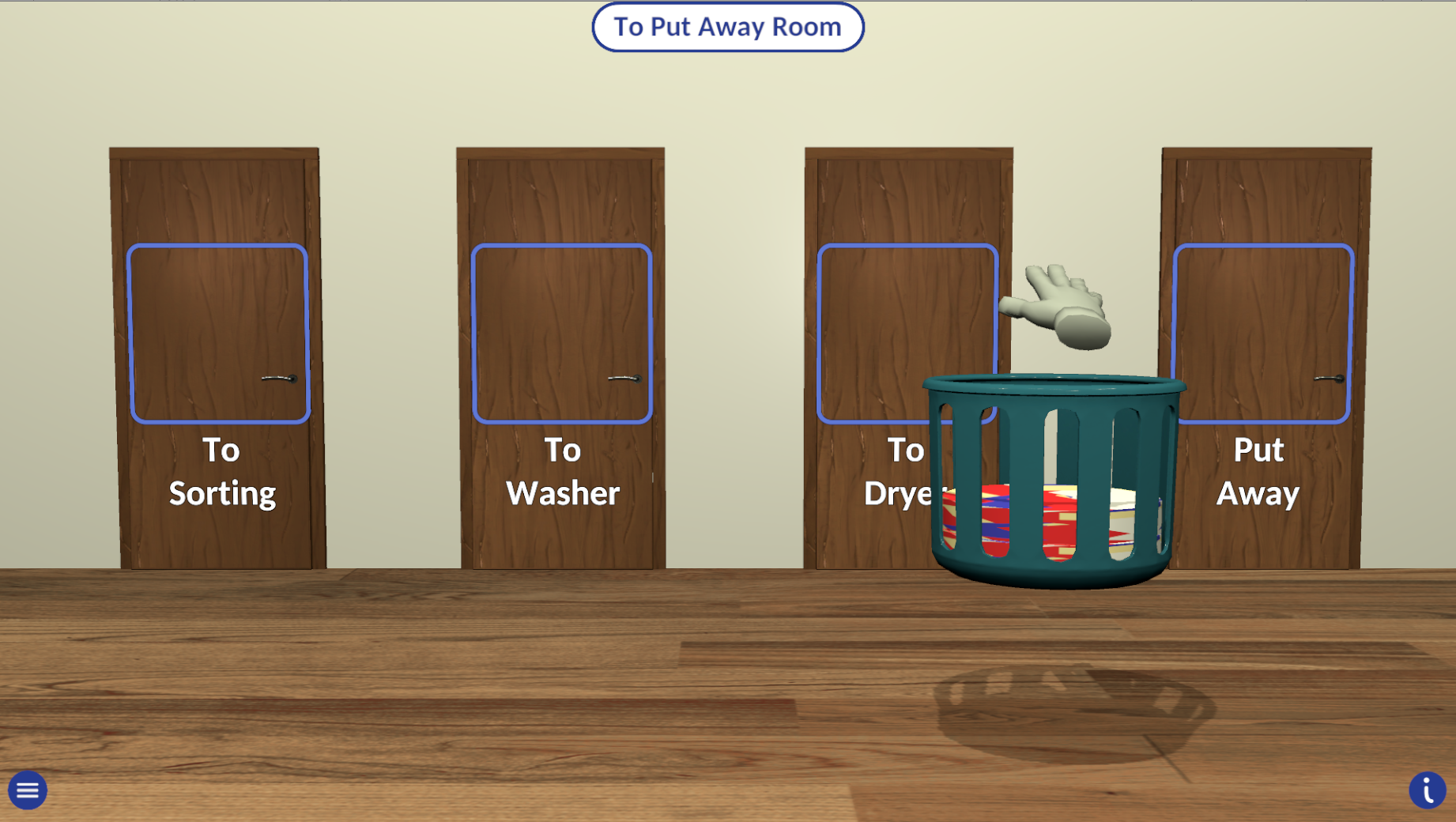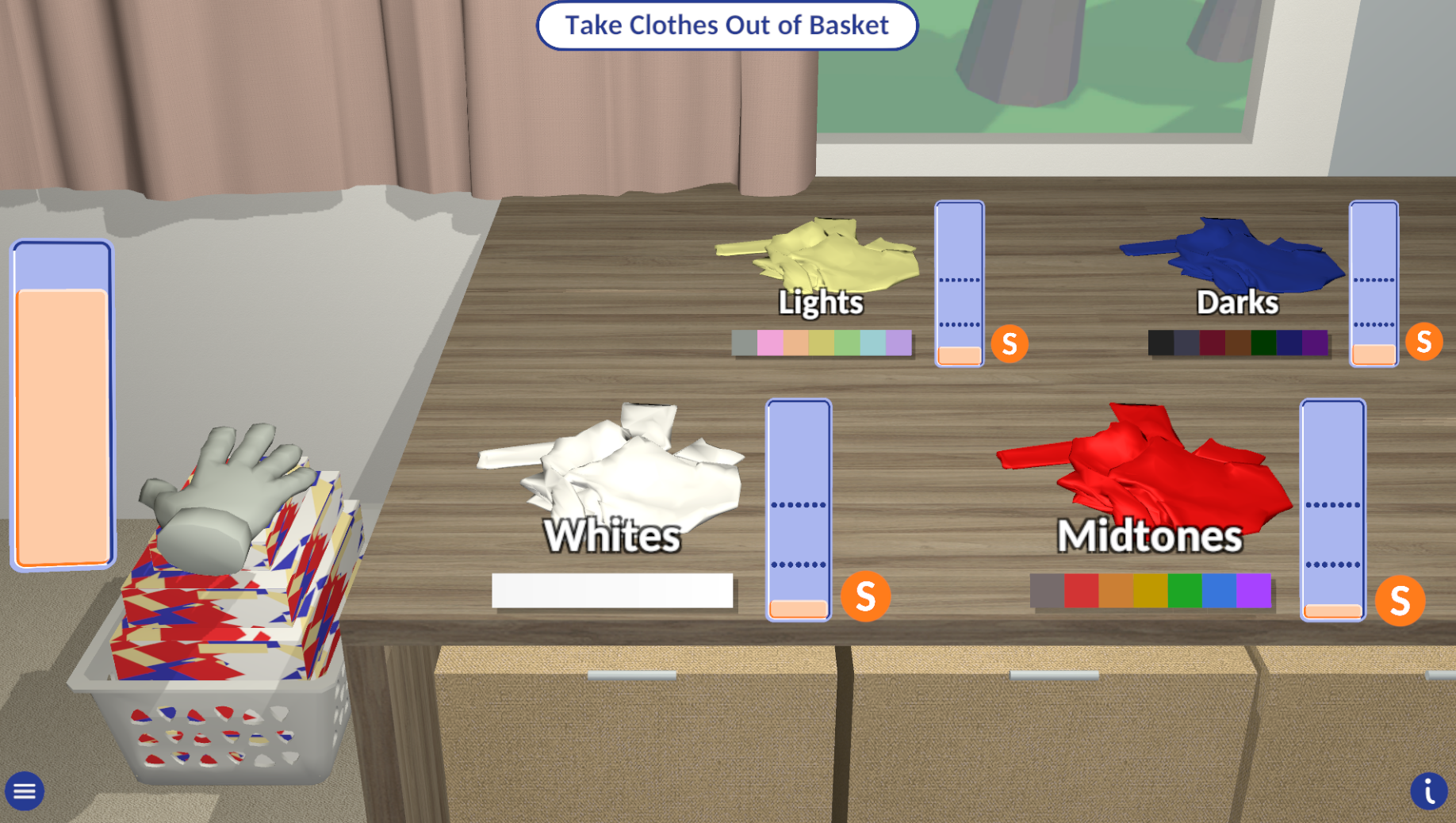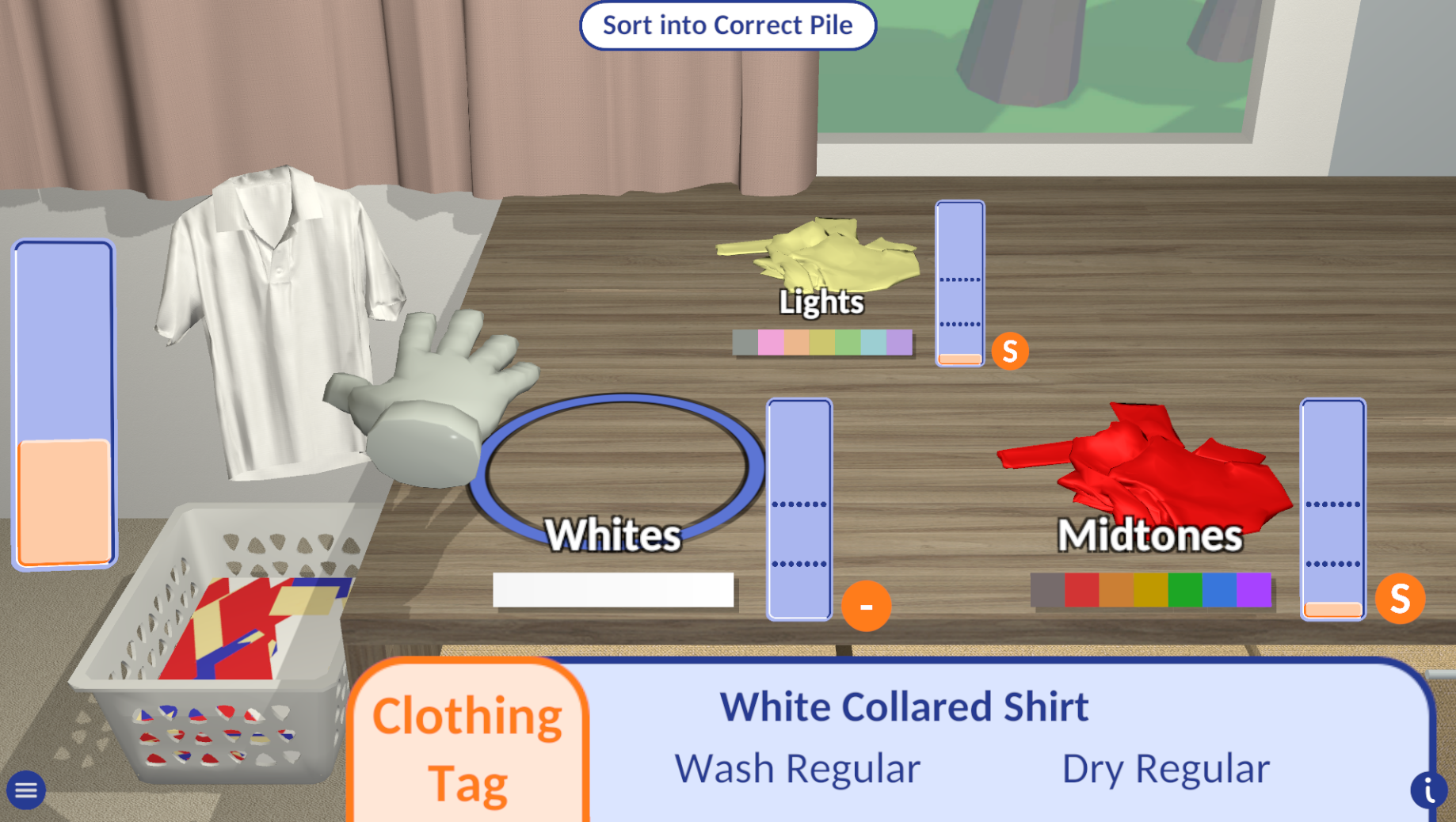Introducing Burt®’s First IADL
LaundryLoader™

Why use Burt® to do laundry?
Many post-injury patients are unable to engage in meaningful and relevant tasks due to safety concerns, motor deficits, or cognitive challenges. Burt®’s process for IADL software centers patient effort and independence, while maintaining a high standard of efficiency and safety. LaundryLoader™ provides a supportive and safe virtual environment, allowing the patient to independently demonstrate both motor and cognitive occupation performance skills much earlier in the recovery journey.
Burt®’s Arm Weight Compensation allows a patient to focus on the laundry tasks without straining to support their arm
LaundryLoader™ replicates the environments and props involved in laundry-related activities. Patients must sort clothing by color, then transport the sorted loads to the washer, followed by the dryer.
These steps provide for logical sequencing of tasks, and require use of the appropriate tools and materials, such as laundry detergent. As the goals become more complex, the activity encourages accommodating actions when problems are encountered. Patients must problem solve and navigate multiple rooms to resolve incorrect choices or when forgetting a key detail.
A Wide Variety of Features
In addition to the inherent benefit gained from mimicking the steps of a common activity, LaundryLoader™ provides the flexibility to best meet your patient’s needs.
For a faster, Simpler experience, Use “Sort-Only” mode
The longer series of actions can be skipped if the patient is not yet ready for the complexity of multiple steps throughout the whole experience. Sort-Only mode provides a simpler cognitive challenge by focusing only on sorting by color values. This allows the IADL to be approached incrementally, creating that “just right challenge” for every patient.
Haptic Weights for Held Objects
The term “haptics” refers to more than the multi-frequency vibrations that Burt® can create. Haptics are a tool for linking the virtual space to our physical reality.
LaundryLoader™ achieves this by adding different weights to the clothing, baskets, and other objects picked up by the patient over the course of the activity. With this technology, Burt® can do more than abstractly hint at real world situations - it lends realism to the patient’s activities.
Furthermore, in keeping with our commitment to providing the right challenge for every patient, this haptic weight can be turned off at any point, without restarting the activity.
Adjust the length of the activity
Even when a patient is ready for the full array of tasks, and can handle haptic weights, it is vital to keep their endurance in mind. With LaundryLoader™, changing the scope of the task is effortless. With the press of a button, you choose how many clothes are getting cleaned and how many piles are being individually sorted, washed, and dried.
At level 1, a patient will run through a little over 100 separate actions. At level 5, the number of individual actions increases to nearly 400! With three other levels in between, and the ability to tweak these settings in your own custom level, meeting the patient where they are is a breeze.

Overview of
Burt®’s Laundry Process
What does a robotic version of laundry look like?
Sort Colors into 2 - 4 Piles
The patient is presented with clothes of various colors which must be separated. The patient is encouraged to utilize body positioning to reach for and manipulate objects just like in the real world.
Move clothes One-by-One To and From the Washer/dryer
The patient must take the laundry basket through a hallway to several rooms, all the while feeling the weight of the clothes. Once they’ve reached the correct machines, they’ll quickly rack up repetitions as they place each item individually into the machine, and take each one out at the end of the machine cycle.
Select soap and machine settings based on load size
With these steps, the patient is presented with the cognitive task of adding detergent and operating the washing/drying machine controls. These sequenced activities present the opportunity for the therapist to evaluate the patient’s cognitive processing.
Clean out Lint from Dryer
While this virtual lint may not pose a real fire hazard, the patient must remember to complete this vital step before starting up the dryer, just as they would in real life.
Stay in the lead for patient outcomes with BurtCare™
BurtCare™ is a service unique in the field of upper-limb robotics. For more information please visit our BurtCare™ page.















